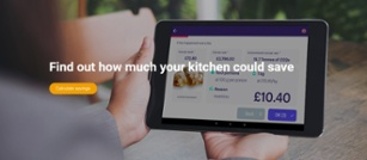With carbon emissions rising globally and consumers being more aware of their carbon footprint, businesses across the world are looking at viable ways to reach carbon neutrality.
There are a lot of active measures businesses can take, from sourcing items locally to using eco-friendly alternatives for materials to reduce the carbon emissions they emit. For foodservice businesses, one key area that is often overlooked is reducing plate waste.
WWF found that food waste counts for 10% of all greenhouse gas. Almost 1 billion tonnes of food is wasted each year. It’s vital that businesses reduce plate waste to minimise their carbon footprint and increase the profitability of their businesses.
Consumer plate was previously thought of to be unchangeable. However, a recent study with London School of Economics and Melco has shed a light on how behavioural science can help mitigate food waste arising from consumers.
This article lists three ways your business can cut down on consumer plate waste.
Learn from industry experts on how to reduce food waste in your kitchen > Watch our free webinar, Plate waste: protecting profit & our planet.
1. Offer different portion sizes
Rory Sutherland, Vice Chairman of Ogilvy UK, found that plate waste reflects two things in a business: either that ‘portion sizes are too large’ or the food is ‘poor quality’.
Typically, restaurants tend to overfill plates in an attempt to offer customers better value for money. Yet, often customers don’t finish everything on their plates. A simple way around this issue is to offer different portion sizes.
While this may feel intimidating or awkward to businesses and staff, for the last two decades businesses have been asking customers a simple question: ‘still or sparkling?
Not only has asking customers whether they want water seen an increase in people ordering water for their table, but also a profit for the businesses who have adopted this question.
Indicating on your menu that you offer different portion sizes can benefit customers in a variety of ways, such as by:
- Allowing people to choose the right portion size for them—whether they’re on a diet, or just want a smaller portion to reflect their appetite.
- Offering slight variations in price for a smaller meal at a reduced price.
While this may take some re-training from your staff, making sure front-of-house or service staff ask ‘would you like a small or large meal?’ can help you significantly reduce plate waste.
2. Make items ‘available on request’
Your kitchen staff will notice that some food items are continually thrown away after a meal. One simple way to reduce this plate waste is by making the often-left item ‘available on request’ on your menu.
For example, Paul Hawkins, Business Development chef at Unilever Food Solutions, trialled removing tomatoes from a full English breakfast.
While this is an iconic staple of the meal, staff noticed that it was continually being left on customers’ plates and wasted. To combat this and reduce plate waste, they added the item as an ‘available on request’. Not only did this see a significant reduction in wasted produce, but prompted customers to ask for what they wanted.
Again, the key here is to communicate with customers that, even if an item isn’t included, they can ask for something to be added or removed based on their preferences.
This could work with:
- Sides on a large meal. This is applicable for items that may often get discarded, such as coleslaw on a burger or extra vegetables with a roast dinner.
- Single-use sachets. Instead of providing sauce, spread, or sugar sachets with every relevant purchase, either have some available at every table or ask if the customer would like some with their meal.
Prompting customers to answer simple questions such as ‘would you like sugar?’ helps you to reduce overall food waste.
According to WRAP 40% of consumers believe businesses aren’t doing enough to tackle food waste. Discover what you can do in our free webinar.
3. Introduce take-out boxes
While requesting to take food away with you is a question is something American restaurants have been asking for decades, customers can feel intimidated or like they are being an inconvenience when requesting for food to be taken away.
When food is taken away with a customer, not only does this reduce plate waste within your establishment, but also leaves customers feeling like they have got good value for their money. Feeling like they have got two meals for the price of one, this then makes them more likely to return to your restaurant.
Retraining your front of house staff to look at the amount of food left on customers plates at the end of the meals means they can ask ‘would you like to take this away with you?’
The key to reducing plate waste is communication
Ultimately, to reduce plate waste within your business, it’s all about communicating with your customers. Not only will this help you reduce waste within your business, but it will help your customer make the right food choices for them.
With businesses around the world taking significant steps to minimise food waste, these three simple steps can help you begin reducing plate waste today and your carbon emissions.
Discussions, such as Plate waste: protecting profit & our planet, are vital in understanding the expectations of the customer and how you can help manage their needs while creating a sustainable and profitable kitchen.



.png?width=891&name=Untitled%20design%20(3).png)





Comment on my blog